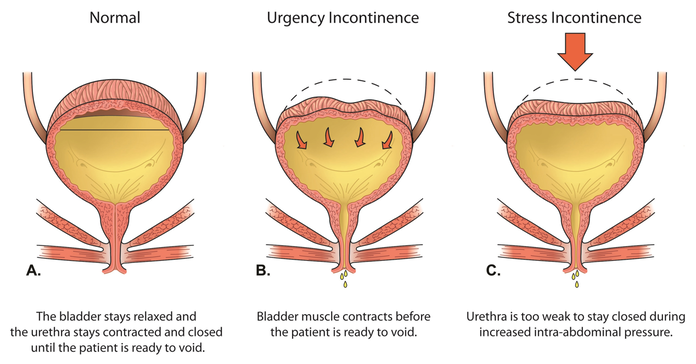
Understanding Urinary Incontinence: Symptoms, Effects, and Treatment Options

Introduction:
Urinary incontinence, often considered a taboo topic, affects millions of individuals worldwide, causing significant discomfort and embarrassment. As a leading urologist, Dr. Dilip Kumar Mishra understands the importance of addressing this condition with sensitivity and expertise. In this article, we delve into the symptoms, effects, and treatment options for urinary incontinence, shedding light on this prevalent yet manageable condition.
Symptoms of Urinary Incontinence:
Urinary incontinence manifests in various forms, each with its unique set of symptoms. The most common types include stress incontinence, urge incontinence, overflow incontinence, and mixed incontinence. Symptoms may include:
- Leakage of urine during physical activities such as coughing, sneezing, or exercising (stress incontinence).
- Sudden and intense urge to urinate followed by involuntary leakage (urge incontinence).
- Inability to fully empty the bladder, leading to frequent dribbling (overflow incontinence).
- Combination of stress and urge incontinence symptoms (mixed incontinence).
Effects of Urinary Incontinence:
Beyond the physical discomfort, urinary incontinence can significantly impact an individual’s quality of life. The effects may extend to emotional, psychological, and social aspects, including:
- Embarrassment and loss of self-esteem due to frequent accidents and the fear of leakage in public.
- Social withdrawal and avoidance of social activities, leading to feelings of isolation and depression.
- Disruption of sleep patterns due to nocturia (frequent nighttime urination), resulting in fatigue and decreased productivity.
- Compromised intimacy and strain on personal relationships due to concerns about odor and leakage during sexual activity.
Treatment Options:
Fortunately, urinary incontinence is a treatable condition, and various options are available to manage its symptoms effectively. Treatment approaches may include:
- Lifestyle Modifications: Simple lifestyle changes such as limiting caffeine and alcohol intake, maintaining a healthy weight, and practicing pelvic floor exercises (Kegels) can improve bladder control.
- Medications: Prescription medications may be prescribed to alleviate symptoms of urge incontinence by relaxing the bladder muscles or increasing bladder capacity.
- Behavioral Therapies: Techniques such as bladder training, scheduled voiding, and biofeedback can help retrain the bladder and improve control over urination.
- Pelvic Floor Rehabilitation: Pelvic floor physical therapy, including pelvic floor muscle training and electrical stimulation, can strengthen the muscles and improve bladder control.
- Minimally Invasive Procedures: For severe cases of urinary incontinence, minimally invasive procedures such as botox injections, urethral bulking agents, or sacral nerve stimulation may be recommended to restore bladder function.
- Surgical Interventions: In certain cases, surgical procedures such as sling placement, bladder neck suspension, or artificial urinary sphincter implantation may be considered to provide long-term relief from urinary incontinence.
Conclusion:
Urinary incontinence is a prevalent condition that can have a profound impact on an individual’s physical and emotional well-being. However, with early diagnosis and appropriate treatment, its symptoms can be effectively managed, allowing individuals to regain control of their bladder function and enjoy an improved quality of life. As a trusted urologist, Dr. Dilip Kumar Mishra is dedicated to providing comprehensive care and personalized treatment plans to help patients overcome urinary incontinence and achieve optimal urological health. If you or a loved one is experiencing symptoms of urinary incontinence, don’t hesitate to seek professional medical advice and explore available treatment options for relief and restoration of bladder function.